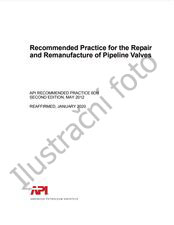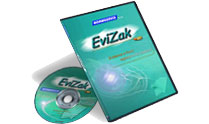Potřebujeme váš souhlas k využití jednotlivých dat, aby se vám mimo jiné mohly ukazovat informace týkající se vašich zájmů. Souhlas udělíte kliknutím na tlačítko „OK“.

API/NPRA 1996SURVEY-ed.1997
FINAL REPORT - 1996 AMERICAN PETROLEUM INSTITUTE/NATIONAL PETROLEUM REFINERS ASSOCIATION SURVEY OF REFINING OPERATIONS AND PRODUCT QUALITY
Přeložit název
NORMA vydána dne 1.7.1997
Informace o normě:
Označení normy: API/NPRA 1996SURVEY-ed.1997
Datum vydání normy: 1.7.1997
Kód zboží: NS-1139329
Počet stran: 200
Přibližná hmotnost: 631 g (1.39 liber)
Země: Americká technická norma
Kategorie: Technické normy API
Anotace textu normy API/NPRA 1996SURVEY-ed.1997 :
API/NPRA 1996 SURVEY, 1997 Edition, July 1997 - FINAL REPORT - 1996 AMERICAN PETROLEUM INSTITUTE/NATIONAL PETROLEUM REFINERS ASSOCIATION SURVEY OF REFINING OPERATIONS AND PRODUCT QUALITY
I. SURVEY PURPOSE
The refining industry has relied in the past on industry surveys to collect information about current product quality and process facilities. Given changes in crude slate, process configurations and product specifications that have taken place since the 1989 survey of the National Petroleum Refiners Association (NPRA), a new survey was commissioned to provide current information.
A survey of industry refining data was conducted for the period May 1 through August 31, 1996. It includes information on domestically produced gasoline and diesel product quality as well as domestic refining capacity and operating data.
The blank data input forms found in Appendix G were used to collect the necessary information. These forms were designed by experts from the American Petroleum Institute (API) and NPRA with input from the contractor. API and NPRA distributed these forms to their member companies in August 1996 with instructions to complete and return the forms to the contractor chosen for data base management. No party other than the contractor saw the raw, disaggregated data. The objectives of contractor were to: 1) respond to all industry questions in regard to completing the data input forms, 2) receive and validate the data, and 3) aggregate the data, all the while maintaining confidentiality of individual refinery and company information.
II. SCOPE OF WORK
The required work for this survey was divided into four tasks as explained below:
Task 1: Tracking
The contractor was the point-of-contact for all questions about the data input forms. While the API and NPRA each designated a person from the associations staff to respond to questions from the companies, all issues related to data input instructions were resolved by the contractor, when possible.
The contractor was also responsible for advising the API which member companies and refineries had responded to the survey. API and NPRA staff in turn relied on this information to solicit maximum practical participation from the industry. Information regarding the identity of participants was not shared with API or NPRA member companies. The data reporting period was closed on January 6, 1997.
Task 2: Data Base
As input forms were received from the refineries, the contractor entered the data into a Paradox data base which had been previously designed to hold and aggregate the data. Paradox is a relational data base well-suited for multi-refinery studies of this size. The contractor relied upon an extensive background in designing data base systems using Paradox Application Language (PAL) to record, calculate, and report client data.
Data validation consisted of three steps. First, all data initially entered into the data base were independently verified for accuracy by another individual in the contractors office. Second, using a statistical program, the contractor identified outlying values for each variable. Data points outside three standard deviations of the average were reviewed and either corrected or removed from the data base. A third validation step consisted of comparing Petroleum Administration for Defense District (PADD) aggregated data from this survey with the data reported for May through August 1996 in the Petroleum Supply Monthly issued by the Energy Information Administration (EIA). Comparisons are noted later in this report.
The contractor has maintained individual refinery data as confidential information. No part of a refinerys submission will be made available to any other party. The results of the survey have been aggregated to eliminate the possibility that any individual refinery data might be recognized.
Task 3: Respondents Sample Representation
To provide information on the actual representation of the survey respondents, the contractor has calculated the percentage of crude distillation capacity, gasoline production, and distillate production included in the survey by PADD. These percentages have been calculated using the information reported in Petroleum Supply Monthly, issued by the EIA, as representative of the entire industry for the period May through August, 1996. Summaries of these analyses appear below.
Task 4: Data Summaries
The contractor has aggregated the data by seven (7) geographic areas: PADDs 1 through 4 individually, PADD 5 (excluding California), the Total United States (excluding California), and California. Each aggregation consists of the data summarized on a set of input forms similar to that supplied by each refinery. All aggregations are volume-weighted averages.
Doporučujeme:
EviZak - všechny zákony včetně jejich evidence na jednom místě
Poskytování aktuálních informací o legislativních předpisech vyhlášených ve Sbírce zákonů od roku 1945.
Aktualizace 2x v měsíci !
Chcete vědět více informací? Podívejte se na tuto stránku.



 Cookies
Cookies
